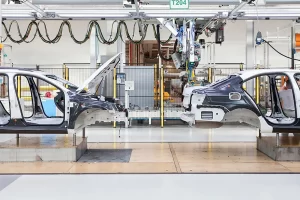
Car Safety Features to Look For in a New Car
Car safety comes in a variety of forms. This can range from rear cross-traffic alert and lane-keeping assist to extra airbags and post-crash survivability. These features are important to consider if you are in the market for a new car.
Rear cross-traffic alert
A rear cross-traffic alert is an automated safety system designed to help drivers back out of parking spaces. These systems provide visual and auditory warnings. They are usually bundled with blind spot monitoring.
The system uses a camera and radar technology to monitor traffic that is approaching the car from the rear. This is done to prevent crashes. It can also be used to reduce insurance premiums. In the most cases, this warning is displayed on the dashboard or the side mirror.
However, it is important to note that there are limitations to the use of this system. For example, the sensors may not work as well in angled parking situations.
Most rear cross-traffic systems are not failsafe. Some drivers have been involved in rear-end crashes when backing out of parking spaces.
Lane-keeping assist
Lane-keeping assist, also known as lane departure warning, is a car safety feature designed to help prevent a driver from drifting out of their lane. It does so by using a combination of brakes, steering, and a forward-facing camera to detect when a vehicle has drifted out of its lane.
Lane-keeping assist may be part of the standard equipment in some new cars, or it may be an optional feature. Many systems will only operate at certain speeds, though.
While lane-keeping assist is a worthwhile feature, it’s only one part of the whole safety package. You still need to drive safely, and you need to monitor your speed and avoid distractions like texting.
The Lane Keep Assist, or LKA, is a slick technology that uses an electric power steering system to gently steer the vehicle back to its lane. Most systems offer a button that can be turned on or off.
Additional airbags
Airbags are a safety feature that can significantly reduce the chance of injury for the occupants in a car. These ‘by-wire’ systems use sensors and have improved rapidly over the past few years.
Front airbags are a standard safety feature in most new cars. However, they have limited ability to protect the driver and passengers in a frontal collision.
In some countries, internationalized European ECE vehicle regulations require the fitting of side airbags. These are mounted on the front and rear seats and offer enhanced protection for the front seat occupants in a side collision.
For side collisions, a side curtain airbag is also a mandatory requirement. The curtain airbag is positioned beneath the roof rail and deploys like a curtain.
When a vehicle hits the ground in a side crash, the airbags deploy to protect the torso and neck area of the occupant. They also provide a soft restraint for the passenger.
Post-crash survivability
Post-crash survivability of car safety can be defined as the ability of an automobile to absorb a crash and minimize injury to its occupants. This is an important factor in the crash-related mortality rate. A number of factors are weighed when measuring the efficacy of a vehicle.
The most obvious is the use of airbags to protect occupants during a crash. However, there are other measures that have been shown to benefit occupants. Among these, anti-lock breaking systems and electronic stability control have a documented effect.
Another measure that has been demonstrated to improve crash-related mortality is the introduction of newer vehicles. In recent years, the introduction of more reliable safety systems has led to lower rates of fatalities.
One way to measure the post-crash survivability of a car is to measure its performance in the Euro NCAP test. Using a database of over 5,000 crash tests conducted between 2000 and 2008, the NTSMS Crashworthiness Data System (NASS) is able to assess crash-related mortality for a large sample of newer and older cars.
Drowsiness detection
Drowsiness detection in cars is a technique that can help drivers prevent road accidents. It’s not a new invention, but it’s still not widely used in vehicles. The American Automobile Association (AAA) found that drowsiness is involved in 8 percent to 9 percent of all crashes.
Several automakers are working on technological solutions for this issue. These include Mercedes, Bosch, Valeo, Magnum International and Robert Bosch.
Driver drowsiness detection systems are based on a number of different methods. Some of them involve behavioral measures and physiological signals. Both of these approaches can be effective, but they have their own benefits and disadvantages.
Behavioral measures include PERCLOS, a technique for detecting drowsiness using the rate at which the driver closes his or her eyes. A study conducted by the AAA revealed that this method has a success rate of over 90 percent. Biological signals, such as the electrocardiogram, are also useful for detecting drowsiness.


